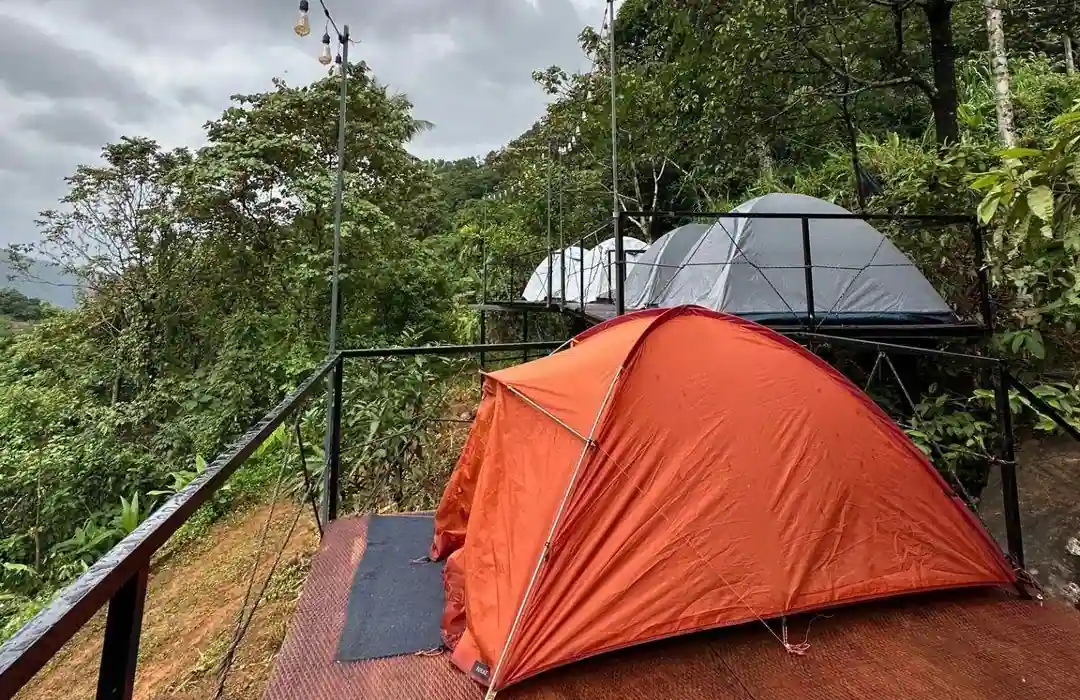If you are planning a camping trip across India and wondering, “Will it be safe and fun?” then rest assured.
India is one of the safest and best places for camping in the world, thanks to its rich environment, diverse geography, favorable weather, picturesque locations, and so on.
By planning your trip carefully—choosing the right location, timing your trip well, packing and following necessary precautions—you can ensure a safe and worthwhile experience.
So, to get a clear idea of the overall situation of – ”Is camping safe in India?” consider reading the full article.
Table Of Content
- Is camping safe in India?
- Is camping allowed in India?
- Safe Places for Camping in India
- Safe time for Camping in India
- Benefits of Camping In India
- Risks of Camping in India
- Camping in different situations
- Environment safety
- Health and Hygiene
- Things to consider
- Tips
1. Is Camping Safe In India?
Totally YES! Camping in India is safe, fun, and a memorable experience. You have vast opportunities to camp. For example – you can camp in the mountains of Uttarakhand and Himachal, the deserts of Rajasthan, along the riverside of the Ganga (other rivers), in the canyons, or in the forests. In short, there is no shortage of safe and amazing locations.
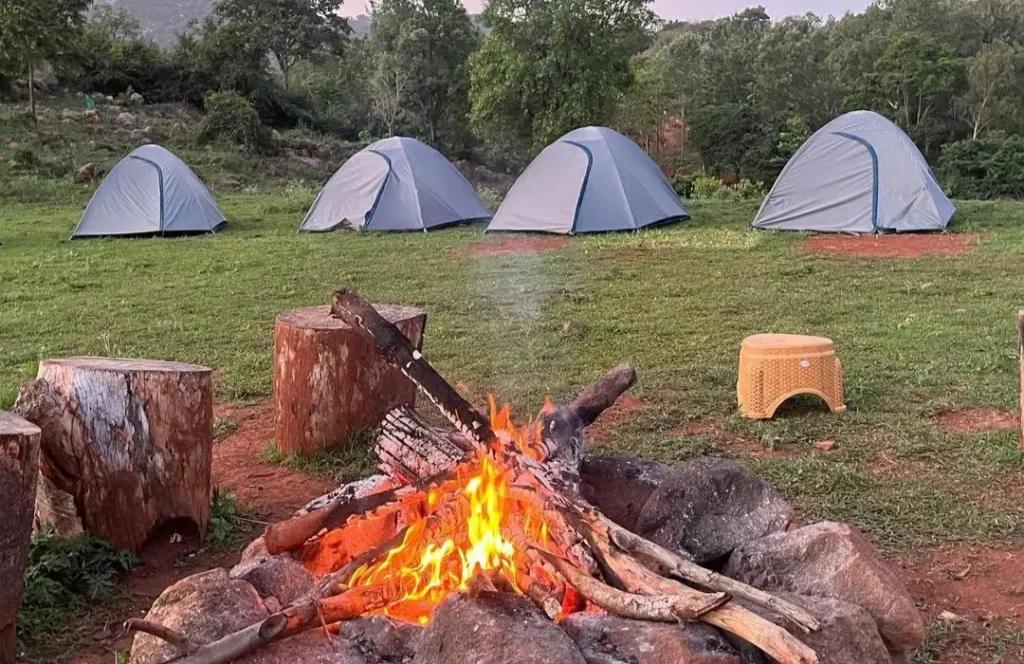
Image by Instagram
Plus, the weather, geographic diversity, nature, and seasons all contribute to making camping in India an exciting, enjoyable and safe activity. However, the complete safety of your trip depends on careful planning, so make sure to pay extra attention to it.
Additionally, the locals in India are very friendly and will guide you to have a safe camping trip in the best locations. You can even rely on them for guidance, navigation and other purposes.
2. Is Camping Allowed And Legal In India?
Absolutely YES! Camping is allowed in India, but on designated areas or sites. Normally, India doesn’t have any rules or do’s/don’ts for camping.
Still, you need to check the area and make sure the location is suitable and legal for camping. Take permission if necessary (from the forest department or authorities), stay away from the cities and try to camp in isolated areas.
If you follow these, then you can camp in any area of India, as long it is secluded and in nature, like mountains, forests, riverside etc.
a) Camping Rules In India
Generally, there are no strict rules and regulations associated with camping in India. You just have to follow basic precautions and common camping rules to ensure a safe and enjoyable experience.
3. Safe Places For Camping In India
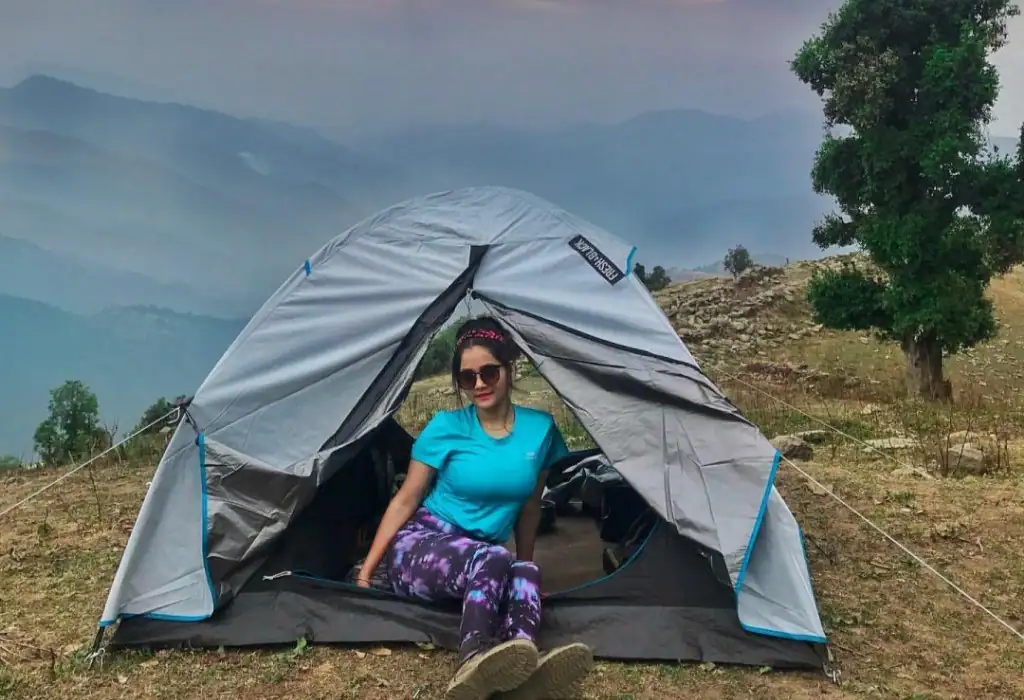
Image by Instagram
India, with its diverse ecosystem and geographical conditions, has a variety of safe and amazing places for camping. Some of them are:
a) Mountain Camping
- Himachal Pradesh
- Uttarakhand – Rishikesh
- Sikkim
- Ladakh
b) Desert Camping
- Rajasthan
- Gujarat
c) Riverside Camping
- Riverside of Ganga
- Meghalaya
- Himachal Pradesh
d) Forest and Wildlife Sanctuary Camping
- Madhya Pradesh
- Karnataka
- Kerala
- Tamil Nadu
- Assam
- West Bengal
e) Canyon and Valley Camping
- Canyon and Valleys
- Maharashtra
e) Unsafe Places For Camping In India
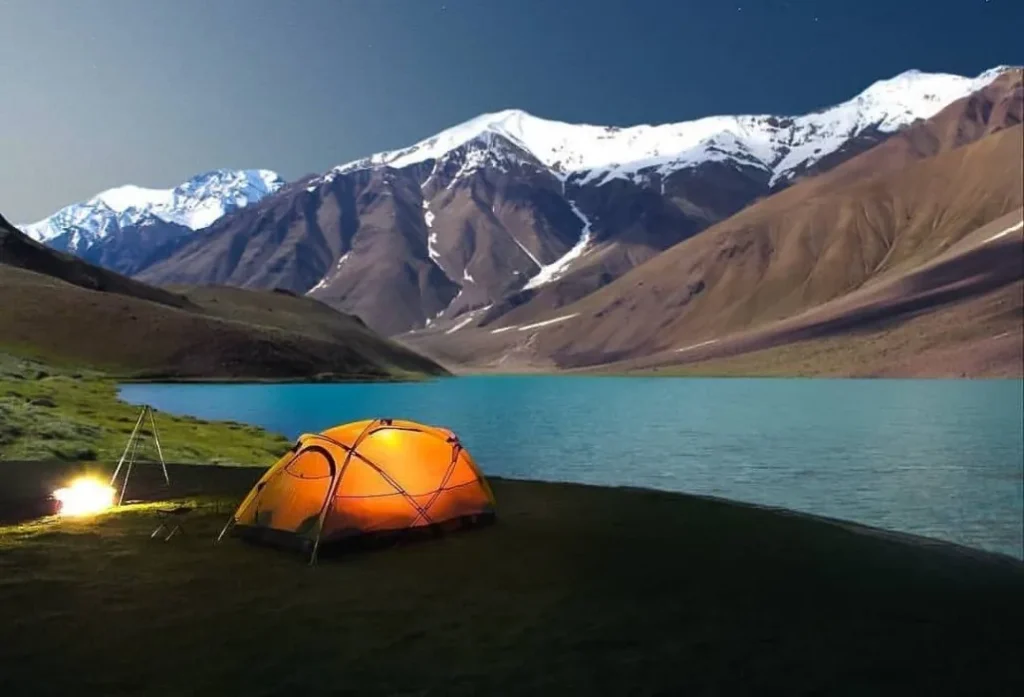
Image by Instagram
Besides the safe places, there are some unsafe areas you should avoid when shortlisting locations for camping in India.
- Remote Areas of Jammu and Kashmir
- Regions with High Wildlife Activity
- Flood-Prone Areas
- Desolate Areas in Extreme Weather Conditions
- Forests without Proper Permissions
- Coastal Areas during Cyclone Season
4. Safest Time For Camping In India
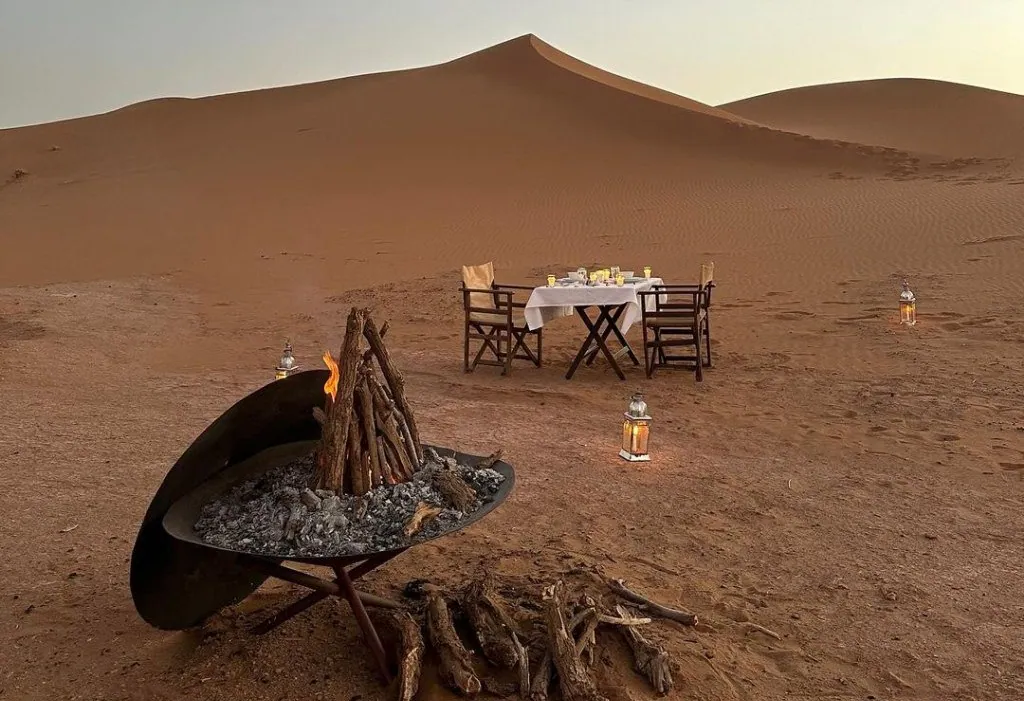
Image by Instagram
Throughout India, the best and safest time for camping is from July to February. Why? It’s simple—this is the peak season. The weather is pleasant, with no extreme conditions or natural disaster risks. Additionally, there are plenty of accommodation options, facilities and you’ll find a friendly crowd of fellow camping enthusiasts.
a) Unsafe Time For Camping In India
Additionally, July to February can be considered unsafe for camping due to the monsoon season and extreme summer heat, which can be quite intense even at night. Your location also plays a crucial role, so plan carefully.
5. Benefits Of Camping In India?
Camping in India is not only safe but also enjoyable and a chance to explore stunning natural landscapes and connect with friendly locals. Here are the benefits you will get during your camping trip in India.
- One of the most affordable places for camping.
- Plenty of accommodations and campsites for self-camping.
- Camp at friendly, safe and secure campsites.
- Relieve all the stress amidst India’s natural beauty.
- Forge deeper connections with nature.
- Savor authentic and simple outdoor cuisine
- Embrace active adventure.
- Get a chance to connect with locals and share deep knowledge.
- Various types of camping, mountain, river, forest, beach and more.
6. What Are The Risks Of Camping In India?
Normally, there are no such potential risks of camping in India, just the normal ones. Like –
a) Wild Animals
If you plan to camp in forests, canyons, or deserts, there’s a high chance you might encounter some dangerous animals like tigers, leopards, snakes etc. This is especially true in regions like –
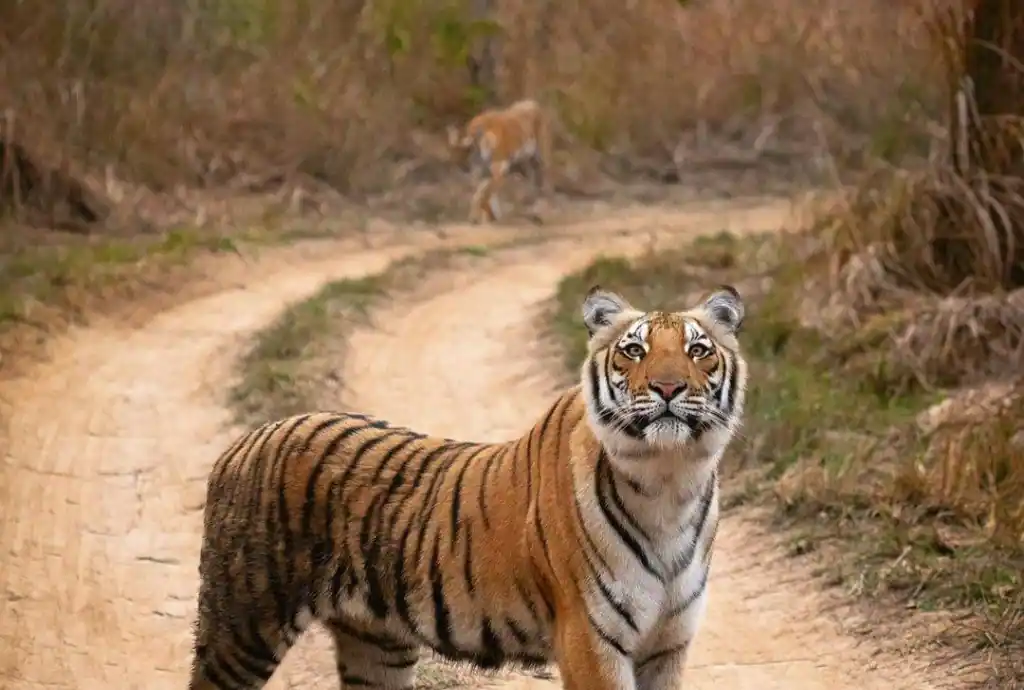
Image by Instagram
- North East India
- Central India
- Rajasthan
- Himachal Pradesh
- Uttarakhand
- Wildlife Sanctuaries
- Forest Parks
- National Parks
- Forest camping
- Mountain Camping
- Desert Camping
To stay safe, camp in groups, avoid known wildlife areas, and choose open and safer locations for your campsite.
b) Weather
Weather is another important factor to consider, especially extreme temperatures and monsoons. If it’s too hot, camping can become unbearable, and the same goes for extreme cold. Plus, camping during the monsoon season, especially in rainy areas like Meghalaya and Mizoram, can ruin your trip.
| Too Hot ☀️ | Too Cold ❄️ | Heavy Rainfall ⛈️ |
| Rajasthan | Jammu & Kashmir | Mizoram |
| Gujurat | Himachal Pradesh | Assam |
| Madhya Pradesh | Uttarakhand | Meghalaya |
| Maharashtra | Kerala |
Therefore, choose optimal weather conditions—not too hot or too cold—and avoid the monsoon season for a more enjoyable camping experience.
c) Natural Disasters
Ensure that the campsite you have selected is not prone to natural disasters such as earthquakes, landslides, or cloudbursts. Some areas to avoid include:
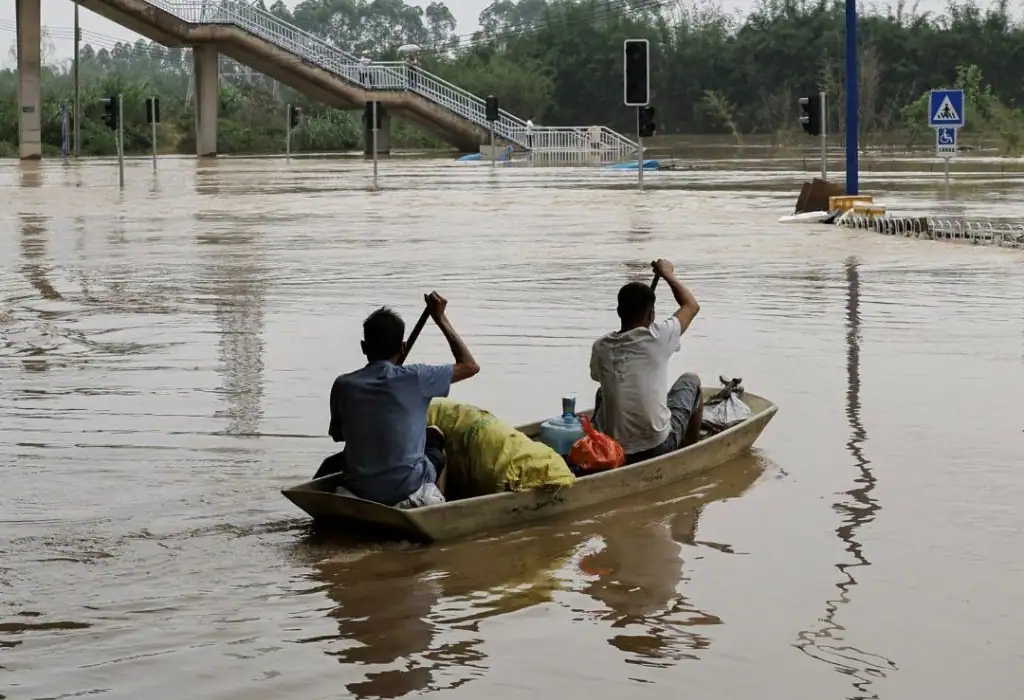
Image by Instagram
i) Earthquake-Prone Areas
- Jammu and Kashmir
- Himachal Pradesh
- Uttarakhand
- Northeastern States
- Delhi NCR
ii) Flood-Prone Areas
- Kerala
- Assam
- Bihar
- Uttar Pradesh
- West Bengal
- Odisha
iii) Landslide-Prone Areas
- Himalayan Region (Jammu and Kashmir, Himachal Pradesh, Uttarakhand, Sikkim)
- Northeastern States (especially Arunachal Pradesh and Manipur)
- Western Ghats (Kerala, Karnataka, Maharashtra)
iv) Cyclone-Prone Areas
- Odisha Coast
- West Bengal Coast
- Andhra Pradesh Coast
- Tamil Nadu Coast
- Gujarat Coast
7. Camping For Different Situation
a) Is It Safe To Camp Alone In India?
It depends on the location, your prior experience and your ability to survive on your own. If everything is suitable, then it’s completely safe and you can easily try solo camping in suitable areas.
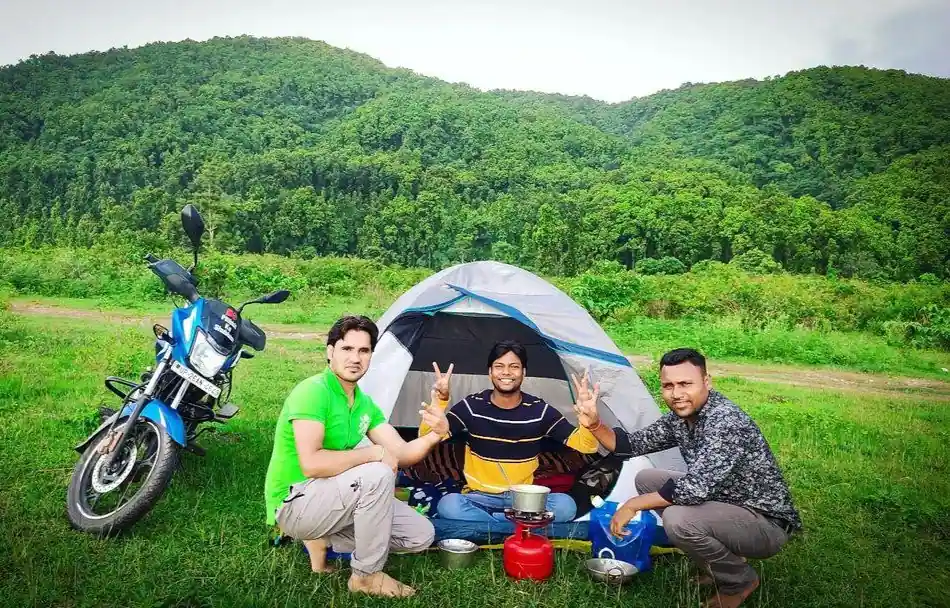
Image by Instagram
However, I still prefer group camping or at least duo camping for the company, to share the workload, and to create memorable experiences together.
Plus, avoid dangerous and shady areas, like –
- Deep Forests: Risk of wildlife encounters and difficulty in navigation.
- Cliffs: Dangerous terrain and risk of falls.
- Riversides: Potential for flooding and strong currents.
- Monsoon-Prone Areas: Increased risk of landslides, flooding, and storms.
- Natural Disaster-Prone Areas: Regions with frequent earthquakes, landslides, or cyclones.
- Remote or Unfamiliar Areas: Limited access to help and increased risk of getting lost.
- Regions with Political Unrest: Areas with potential for conflict or instability.
b) Solo vs. Group Camping
Both solo and group camping can be enjoyable and safe, depending on what you’re looking for. However, group camping with family and friends often has added benefits.
Solo camping offers total peace and a break from city life, providing a chance for introspection and solitude. However, it requires extra caution and self-reliance, as you’ll need to handle all tasks and safety measures on your own.
Group camping, on the other hand, allows you to share the workload and enjoy activities together. You can rely on each other for various tasks like cooking and setting up camp. Additionally, having others around ensures that everyone can keep an eye out for each other’s safety and well-being, making the experience both fun and secure.
c) Woman Safety
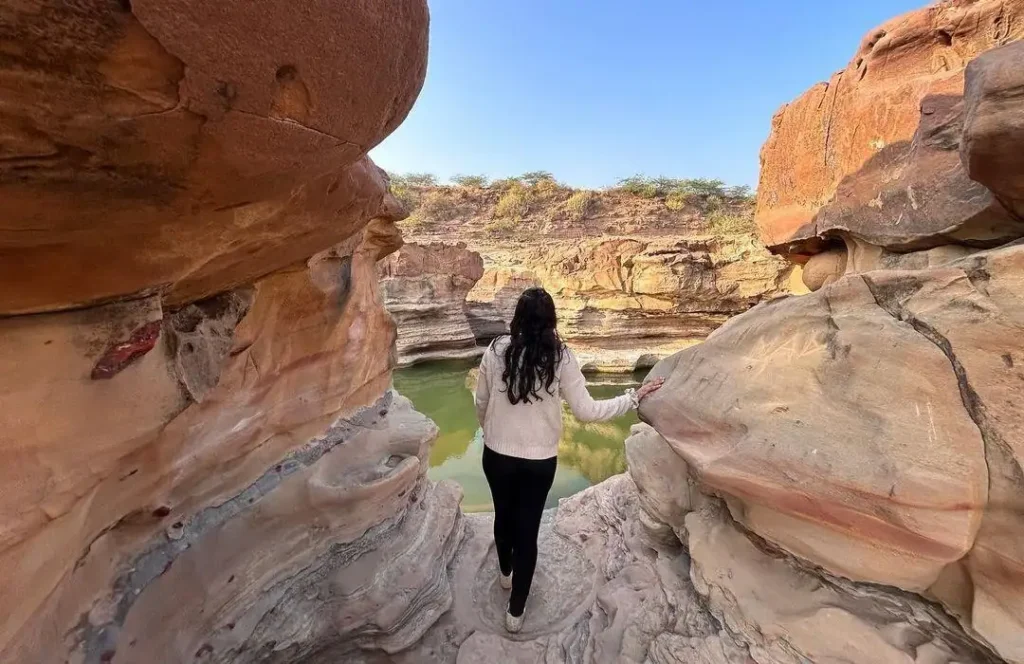
Image by Instagram
You might wonder if India is dangerous or unsafe for women. However, that’s not true at all. While there are instances of misconduct towards women, these incidents are not unique to India and occur globally.
Generally, India is very safe, and on top of that, the local citizens are very friendly and supportive, making it a welcoming place for women travelers.
8. Environment Safety
In addition to prioritizing your own safety, it’s important to also consider environmental safety and make efforts to preserve its natural beauty.
Follow the first rule of camping – Leave no Trace. Ensure there’s no evidence of your presence at the campsite, including maintaining hygiene, responsibly disposing of waste, and clearing away any traces of firewood or fire.
Plus, don’t disturb the natural flora and fauna of nature because they inhabited these spaces long before our arrival and deserve to remain undisturbed.
Avoid using single-use plastics and other harmful/chemical products instead opt for reusable alternatives to minimize waste.
9. Health And Hygiene
Health and hygiene are super important when camping in India. Bring clean water, wash your hands often, and have a first aid kit handy.
….Dispose of waste properly and be careful with food to stay healthy and happy during your camping trip.
Along with your own safety, make sure to keep an eye out for environmental hygiene. Don’t litter the campsite and forests.
10. Things To Consider
a) General Considerations
- Inform someone about your plans.
- Carry a first aid kit.
- Pack enough food, water, and emergency supplies.
b) Situational Considerations
- Solo Camping
- Have strong navigation skills.
- Carry a personal safety device.
- Choose a secure campsite.
- Group Camping
- Assign roles and responsibilities.
- Establish a communication plan.
- Share essential gear.
c) Location-Based Considerations
- Mountain Camping (Uttarakhand, Himachal Pradesh)
- Prepare for cold weather and altitude sickness.
- Wear proper hiking boots and warm clothing.
- Avoid landslide-prone areas.
- Desert Camping (Rajasthan)
- Bring ample water and sun protection.
- Prepare for temperature changes.
- Avoid sandstorm-prone areas.
- Riverside Camping (Ganga)
- Be aware of rising water levels.
- Camp at a safe distance from the water.
- Follow water safety guidelines.
- Forest Camping
- Stay informed about wildlife activity.
- Use biodegradable products.
- Store food properly to avoid attracting animals.
d) Type of Camping Considerations
- Adventure Camping
- Have the right gear and skills for activities.
- Hire professional guides if needed.
- Check the safety ratings of providers.
- Family Camping
- Choose family-friendly campsites.
- Plan suitable activities for all ages.
- Ensure children’s safety at all times.
- Glamping
- Research sites with luxurious accommodations.
- Check for amenities like secure tents and meal services.
- Respect the natural environment.
11. Safety And Precautions
Here are some safety tips and precautions that will aid you in your camping trip and ensure that it is safe and secure.
- Research camping location thoroughly, including weather and terrain.
- Inform someone about your camping plans and expected return time.
- Pack a well-equipped first aid kit, food, water, and emergency supplies.
- Choose safe campsites away from hazards like cliffs and wildlife habitats.
- Respect wildlife and their habitats; keep a safe distance.
- Follow Leave No Trace principles; pack out all trash and use biodegradable products.
- Stay hydrated, especially in hot climates like deserts.
- Stay updated on weather forecasts, especially during monsoon season or in mountainous regions.
- Carry a charged phone or GPS device for communication and navigation.
- Trust your instincts and prioritize safety above all else.
FAQ
1. Is it legal to camp anywhere in India?
2. What country is safest to camp?
Wrap Up
In conclusion, camping in India is completely safe and offers thrilling adventures amidst diverse landscapes. With careful planning and adherence to safety measures, it can be a secure and memorable experience.
By following guidelines, choosing suitable campsites, and respecting the environment, you can mitigate risks and enjoy responsibly. Prioritize personal safety, environmental conservation, and compliance with local regulations for a rewarding camping trip in India.


